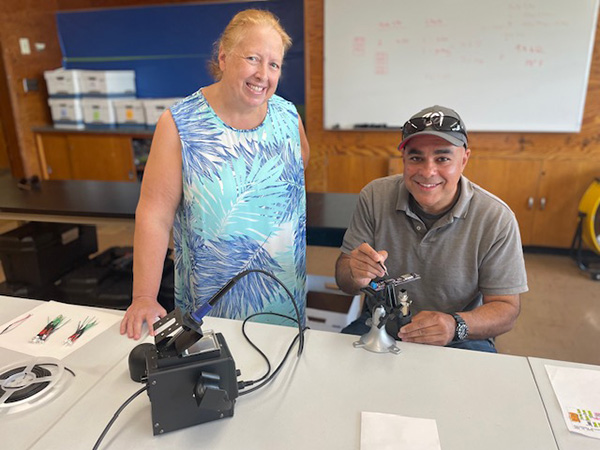
community partner: coalinga-huron unified school district
Like many districts in Central California, the Coalinga-Huron Unified School District wanted to add advanced science, technology, engineering and math (STEM) education to the curriculum offered to the 4,000 students enrolled in its elementary, middle and high schools. But the district did not have a dedicated source of funding to support the STEM programs.
That’s where Chevron was able to help. About five years ago, Chevron helped the district get a grant from Project Lead the Way, a non-profit that develops STEM training programs for teachers and curriculum for students. That grant enabled district counselors and science teachers to attend a conference in Riverside.
“After the conference, everybody came back and said, yes, we have to bring Project Lead the Way to our district,” says Lori L. Villanueva, the district Superintendent.
Chevron helped the district obtain a more significant grant from Project Lead the Way and provided supplemental funding to the district.
Chevron’s grant was essential to hiring a full-time trainer responsible for mentoring teachers in how to use the Project Lead the Way program. The joint funding also paid the costs of additional classes for teachers and of the program materials and license fees for bringing the curriculum to classrooms.
“We wouldn’t have been able to do anything good without both of those grants,” she says. “I wouldn’t be able to afford it in any way if Chevron wasn’t helping out.”Chevron has provided annual grants, allowing the program to grow by leaps and bounds. There are now two teacher trainers, Villanueva says. Over the years, they have trained nearly 50 middle and high teachers to use individual STEM modules in their classrooms.
Students have been enthusiastic, especially when it comes to the modules on medical detectives (like CSI on TV) and robotics, Villanueva added. And every new grant means the district can buy new modules to expand the range of topics students can learn.
For now, the program’s focus remains on elementary and middle school classrooms, in part because there has historically been less science taught in those grades. Concentrating the training on those teachers, especially in elementary grades, strengthens their skills and confidence in teaching science. Eventually, Villanueva hopes to expand the program into high school.
Villanueva also has taken a unique approach to combining the STEM lessons with the district’s English learning program for the large number of English learners in the early grades. “They are not just learning science, but we tie the magic of science with the magic of our English learner program,” she said. “Really, what we’re looking to do is make kids interested in STEM, and make sure their minds are open to the world that’s changing in front of them, because it’s changing every day.”